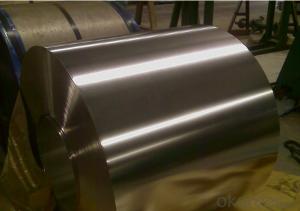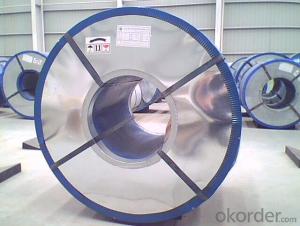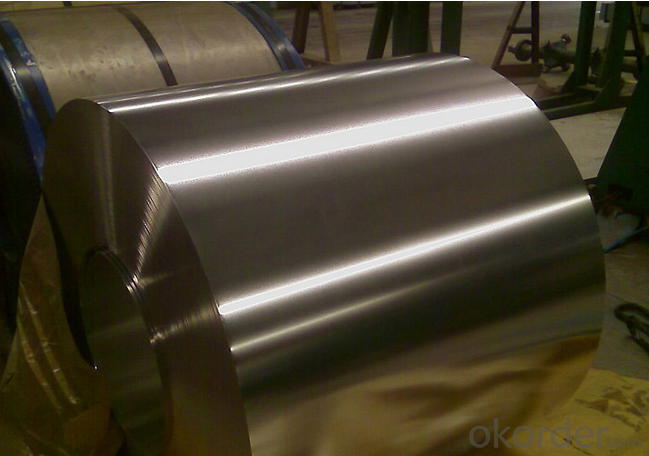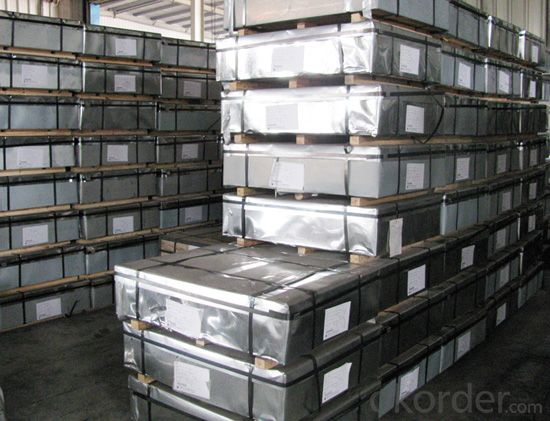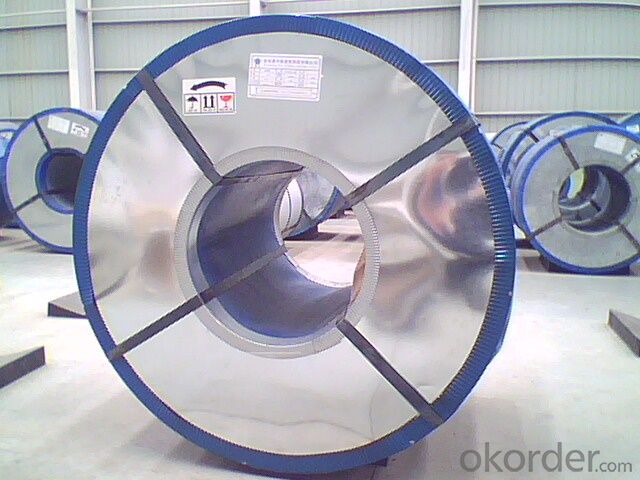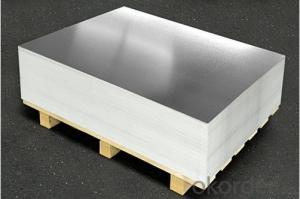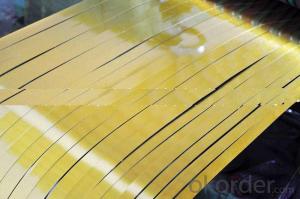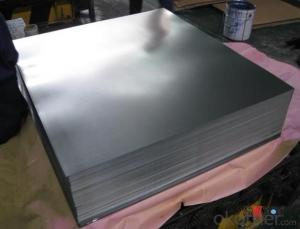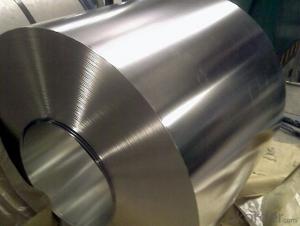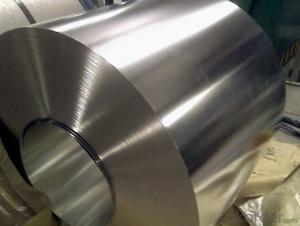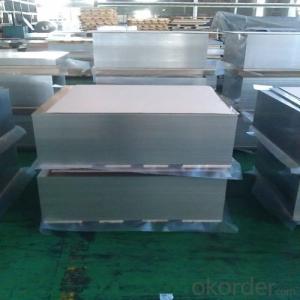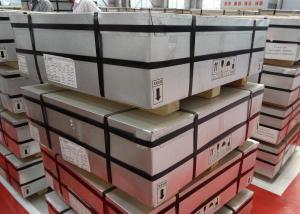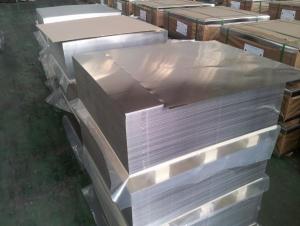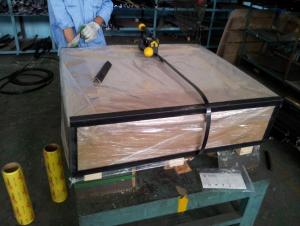Electrolytic Tinplate (ETP) Coil and Sheets for Foods Packaging
- Loading Port:
- Tianjin
- Payment Terms:
- TT OR LC
- Min Order Qty:
- 25 m.t.
- Supply Capability:
- 7000 m.t./month
OKorder Service Pledge
OKorder Financial Service
You Might Also Like
1.Structure of Electrolytic Tinplate (ETP) Coil and Sheets for Foods Packaging Description
Electrolytic Tin Plate Coils and Sheets for Foods Metal Packaging, is one thin steel sheet with a coating of tin applied by electrolytic deposition. Tinplate made by this process is essentially a sandwich in which the central core is strip steel. This core is cleaned in a pickling solution and then fed through tanks containing electrolyte, where tin is deposited on both sides. As the strip passes between high-frequency electric induction coils, it is heated so that the tin coating melts and flows to form a lustrous coat.
2.Main Features of the Electrolytic Tinplate (ETP) Coil and Sheets for Foods Packaging
Appearance – Electrolytic Tin Plate is characterized by its beautiful metallic luster. Products with various kinds of surface roughness are produced by selecting the surface finish of the substrate steel sheet.
Paintability and printability – Electrolytic Tin Plates have excellent paintability and printability. Printing is beautifully finished using various lacquers and inks.
Formability and strength – Electrolytic Tin Plates have got very good formability and strength. By selecting a proper temper grade, appropriate formability is obtained for different applications as well as the required strength after forming.
Corrosion resistance – Tinplate has got good corrosion resistance. By selecting a proper coating weight, appropriate corrosion resistance is obtained against container contents. Coated items should meet 24 hour 5 % salt spray requirement.
Solderability and weldability – Electrolytic Tin Plates can be joined both by soldering or welding. These properties of tinplate are used for making various types of cans.
Hygienic – Tin coating provides good and non toxic barrier properties to protect food products from impurities, bacteria, moisture, light and odours.
Safe – Tinplate being low weight and high strength makes food cans easy to ship and transport.
Eco friendly – Tinplate offers 100 % recyclability.
Tin is not good for low temperature applications since it changes structure and loses adhesion when exposed to temperatures below – 40 deg C.
3.Electrolytic Tinplate (ETP) Coil and Sheets for Foods Packaging Images
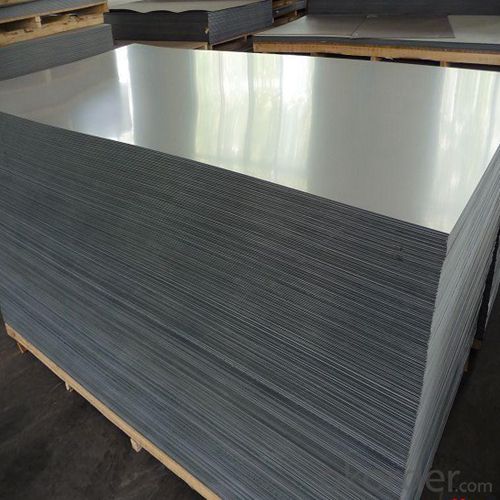
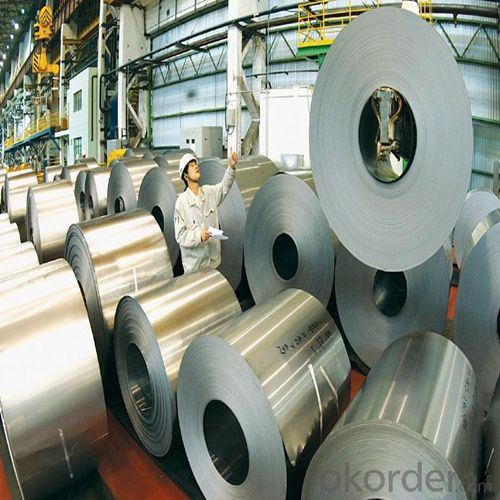
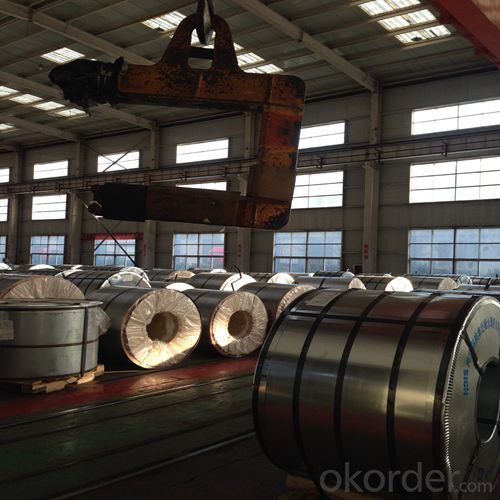
4.Electrolytic Tin Plate Coils and Sheets for Foods Metal Packaging Specification
Standard | ISO 11949 -1995, GB/T2520-2000,JIS G3303,ASTM A623, BS EN 10202
|
Material | MR,SPCC |
Thickness | 0.15mm - 0.50mm |
Width | 600mm -1150mm |
Temper | T1-T5 |
Annealing | BA & CA |
Coil Inner Diameter | 508mm |
Weight | 6-10 tons/coil 1~1.7 tons/sheets bundle |
Passivation | 311 |
Oil | DOS |
Surface | Finish,bright,stone,matte,silver |
5.FAQ of Electrolytic Tin Plate Coils and Sheets for Foods Metal Packaging
- How are the Electrolytic Tin Plates specified?
The Electrolytic Tin Plates are specified as per the steel base, extent of tempering, the coating weight, annealing method and the surface finish.
- How many types there are for base steels?
The base steels are of three types: Type MR, L, D
- Q: How does tinplate contribute to the presentation of jewelry?
- Tinplate contributes to the presentation of jewelry by providing a durable and attractive packaging solution. It offers a sleek and shiny surface that enhances the visual appeal of the jewelry, making it more eye-catching and appealing to customers. Additionally, tinplate's ability to be molded into various shapes and sizes allows for creative and customized packaging designs that can effectively showcase the jewelry's unique features. Its protective properties also help preserve the quality and condition of the jewelry, ensuring that it reaches the customers in pristine condition.
- Q: How does tinplate contribute to the circular economy?
- Tinplate contributes to the circular economy by being highly recyclable and reusable. It can be easily collected, sorted, and processed into new products without losing its quality. This reduces the need for virgin materials and saves energy and resources in the production process. Additionally, tinplate's corrosion resistance properties extend the lifespan of products, further minimizing waste and promoting a more sustainable approach to manufacturing.
- Q: What are the different printing techniques used on tinplate?
- There are several different printing techniques used on tinplate, including lithography, offset printing, screen printing, and digital printing. These methods allow for high-quality and vibrant designs to be applied to tinplate surfaces, making them suitable for various packaging and promotional materials.
- Q: How is tinplate used in the wine and spirits industry?
- Tinplate is commonly used in the wine and spirits industry for packaging purposes. It is used to manufacture metal cans, bottles, and closures that help preserve the quality and integrity of the products. Tinplate containers provide a barrier against oxygen, light, and moisture, which helps to prevent oxidation and maintain the taste and aroma of the wine or spirit. Additionally, tinplate packaging is durable, lightweight, and recyclable, making it a popular choice for the industry.
- Q: What are the main applications of tinplate in the beverage industry?
- Tinplate is commonly used in the beverage industry for the production of cans and containers. Its main applications include packaging for carbonated drinks, beer, fruit juices, and other beverages. Tinplate provides excellent protection against corrosion, ensuring the freshness and quality of the product. It also offers high strength, easy formability, and good printability, making it an ideal choice for branding and product differentiation. Moreover, tinplate cans are easily recyclable, contributing to sustainability efforts in the industry.
- Q: What are the main advantages of using tinplate for electrical enclosures?
- One of the main advantages of using tinplate for electrical enclosures is its excellent corrosion resistance. Tinplate is coated with a thin layer of tin, which acts as a protective barrier against moisture and other corrosive elements. This ensures that the electrical components inside the enclosure remain well protected and functional for extended periods. Another advantage is its high strength and durability. Tinplate is known for its ability to withstand mechanical stress and impacts, making it a reliable choice for enclosures that may be subjected to rough handling or harsh environmental conditions. Furthermore, tinplate is a cost-effective option. It offers a good balance between price and performance, making it an economical choice for electrical enclosure manufacturers. Additionally, tinplate is easily recyclable, making it an environmentally friendly material. Overall, using tinplate for electrical enclosures provides excellent corrosion resistance, durability, and cost-effectiveness, making it a preferred choice in many applications.
- Q: How does tinplate impact the ease of opening and closing packaging?
- Tinplate, due to its durability and flexibility, positively impacts the ease of opening and closing packaging. It provides a sturdy and secure enclosure, ensuring that the package remains intact during transportation and storage. Additionally, tinplate's smooth surface allows for effortless opening and closing, making it convenient for consumers to access the contents of the packaging.
- Q: How is tinplate corrosion resistant?
- Tinplate is corrosion resistant due to the thin layer of tin that is applied to its surface. Tin acts as a protective barrier, preventing the underlying iron or steel from coming into contact with moisture or oxygen, which are the main causes of corrosion.
- Q: What are the recycling processes for tinplate?
- The recycling processes for tinplate typically involve sorting, shredding, and melting the tinplate to separate it from any contaminants. Once separated, the molten tinplate can be used to create new tinplate products or combined with other materials for various applications.
- Q: How does tinplate compare to aluminum packaging in terms of cost?
- Tinplate packaging generally tends to be more cost-effective compared to aluminum packaging. Tinplate is a durable material that is made from thin sheets of steel coated with a layer of tin, making it a cost-efficient option for packaging. On the other hand, aluminum packaging is lightweight and provides excellent barrier properties, but it is typically more expensive due to the higher cost of aluminum as a raw material.
Send your message to us
Electrolytic Tinplate (ETP) Coil and Sheets for Foods Packaging
- Loading Port:
- Tianjin
- Payment Terms:
- TT OR LC
- Min Order Qty:
- 25 m.t.
- Supply Capability:
- 7000 m.t./month
OKorder Service Pledge
OKorder Financial Service
Similar products
Hot products
Hot Searches
Related keywords
